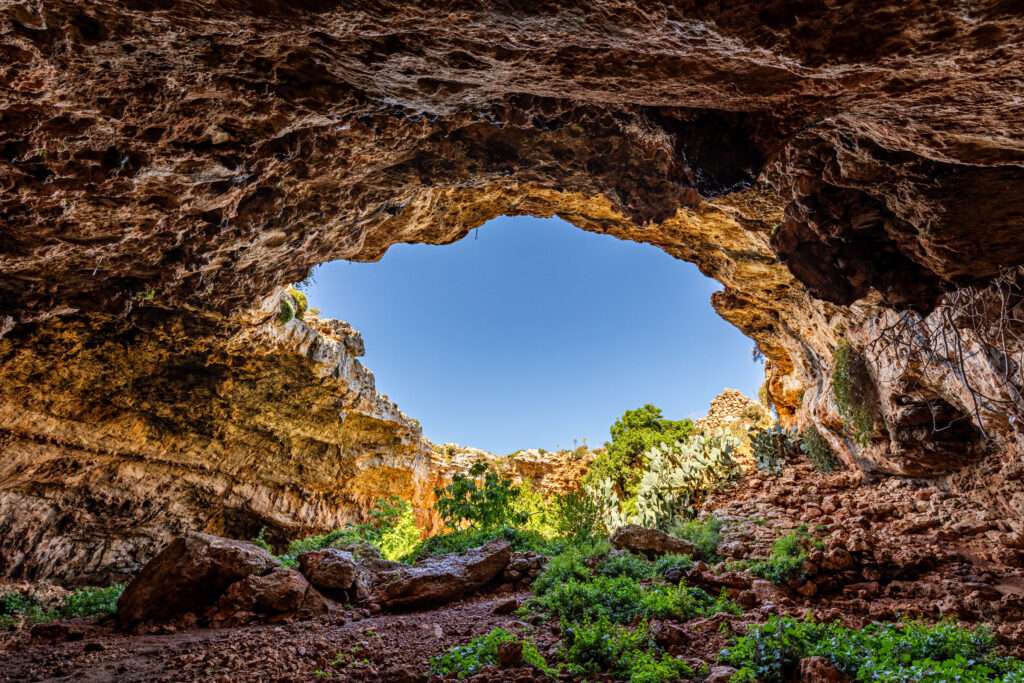Table of Contents
ToggleLatnija Cave - Discovery in Mellieha
This Could Rewrite 1,000 Years of Maltese History
In April 2025, a monumental archaeological discovery in Mellieha, Malta, has dramatically reshaped our understanding of the island’s prehistoric past. Excavations at Latnija Cave (also known as Ghar tal-Latnija) have uncovered evidence indicating that humans inhabited Malta at least 8,500 years ago—about a millennium earlier than previously believed. This revelation not only extends Malta’s known human history but also challenges long-standing assumptions about early Mediterranean seafaring and hunter-gatherer societies.
Unveiling Malta's Hidden Past
Latnija Cave, situated in the northwestern region of Malta near Cirkewwa, is a large doline that opens toward the sea. Its sheltered location and proximity to marine resources made it an ideal site for prehistoric human habitation. In 2019, a scientific consortium led by Professor Eleanor Scerri of the Max Planck Institute for Geoanthropology and the University of Malta, along with Professor Nicholas Vella of the University of Malta, began systematic excavations at the cave. After nearly six years of excavations, research, and rigorous testing, the team published their findings in the prestigious scientific journal Nature in April 2025 (en.wikipedia.org).
The discovery is considered as significant as Sir Temi Zammit’s identification of Malta’s megalithic temples in the early 1900s. It fundamentally rewrites Malta’s prehistory by introducing a previously unknown Mesolithic phase, extending the chronology of human presence on the island by approximately 1,000 years

Evidence of Early Human Life in the cave
The archaeological team uncovered a wealth of artifacts and features within the cave, including stone tools, hearths, ash deposits, and faunal remains. These findings indicate that the early inhabitants of Malta were hunter-gatherers who relied on a diet of wild foods such as birds, fish, marine mammals, and even species of tortoises and red deer. The presence of hearths and ash deposits suggests that these groups had mastered fire and used it for cooking and warmth.
One of the most striking aspects of this discovery is the evidence of seafaring capabilities. The fact that these hunter-gatherers reached Malta—an island approximately 100 kilometers from the nearest landmass—demonstrates advanced maritime skills. This challenges the prevailing notion that hunter-gatherers lacked the technology or motivation to undertake such long-distance sea voyages.

Implications for Mediterranean Prehistory
The findings at Latnija Cave have profound implications for our understanding of early human societies in the Mediterranean. Previously, it was believed that the first human settlers of Malta were Neolithic farmers who arrived around 7,500 years ago. This new evidence pushes back the timeline by at least a millennium and introduces a new chapter in the story of human migration and adaptation. Within Malta itself, sites such as Għar Dalam, Ta’ Ħaġrat, and Skorba have long been key to understanding early settlement, but Latnija Cave now demonstrates that hunter-gatherer activity on the islands predates these Neolithic sites. Beyond Malta, sites like Franchthi Cave in Greece, Grotta dei Cervi in Italy, and the Cova de l’Aragó in Spain provide context for early Mesolithic communities across the Mediterranean, showing that Malta was part of a broader network of seafaring societies much earlier than previously thought.
Moreover, the discovery necessitates a reevaluation of the ecological impact early humans may have had on now-extinct island species. Similar patterns of human-induced environmental change have been observed in other Maltese sites, such as Għar Dalam, where evidence suggests the extinction of endemic fauna shortly after human arrival. Comparable trends have been noted in Mediterranean islands like Corsica, Sardinia, and the Balearics, where early settlers introduced new predators and competitors that contributed to species extinctions. The Latnija Cave evidence highlights the complex interplay between humans and their environment, showing that even small island ecosystems were significantly influenced by early human activity.
A Future World Heritage Site?
Given its historical significance, Professor Scerri has suggested that Latnija Cave could become a future World Heritage site. “This cave is preserving a piece of European history that we didn’t know about,” she remarked (timesofmalta.com). The site offers a unique glimpse into the lives of Europe’s last hunter-gatherers and their remarkable journey across the Mediterranean.
The Maltese government and international conservation organizations may consider measures to protect and promote the site, ensuring that future generations can appreciate and learn from this extraordinary discovery.
Rewriting Textbooks and Exhibits
The implications of this discovery extend beyond academic circles. School textbooks, university courses, and museum exhibits will need to be updated to incorporate this newly discovered Mesolithic period in Maltese history. The findings challenge established narratives and provide a more nuanced understanding of human prehistory in the Mediterranean region.
The excavation of Latnija Cave in Mellieha has unveiled a hidden chapter of Malta’s past, revealing that humans inhabited the island at least 8,500 years ago. This groundbreaking discovery not only extends the timeline of human presence in Malta but also challenges long-held assumptions about early Mediterranean societies. As research continues, it is likely that more revelations will emerge, further enriching our understanding of the complex history of human settlement and adaptation in the Mediterranean region.



